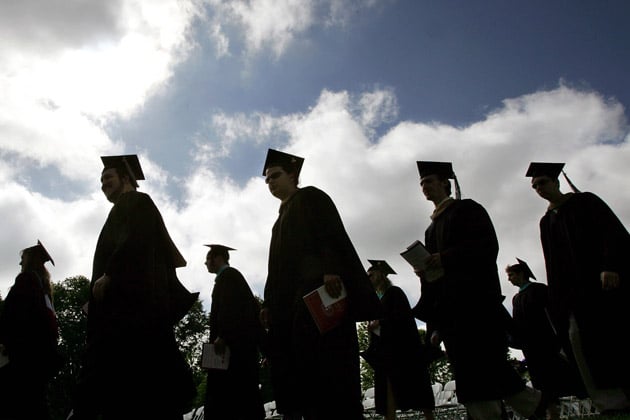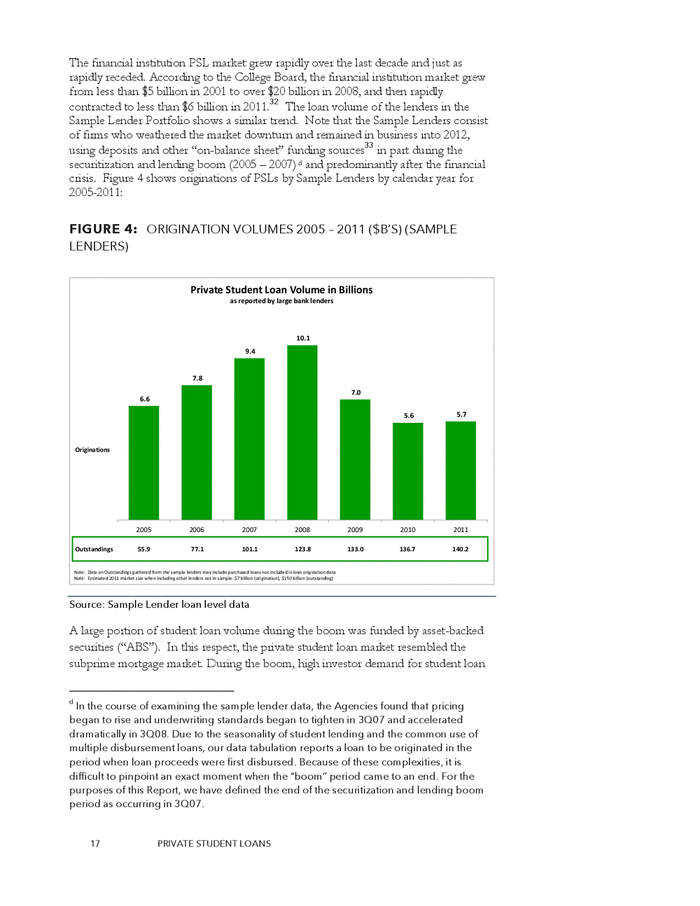
(File photo by Mel Evans/AP Photo)
Much like the mortgage market, the market for private student loans has gone through a big boom and a messy bust. Some banks and lenders played fast and loose with student loans, aggressively marketing them to borrowers who couldn’t afford that amount of debt, according to a new government report.
“Borrowers who took out loans at the height of the boom are still suffering from those excesses,” said Consumer Financial Protection Bureau Director Richard Cordray in remarks to reporters on Thursday. The report, released jointly by the U.S. Department of Education and the CFPB, is the government’s first major study of the murky private student loan market, for which there has long been little regulation or reliable data.
In the run-up to the financial crisis in 2008, the boom in risky private student loans was fueled by Wall Street investors’ demand for securities backed by bundles of student loans, the report said. See the below graph, which draws from proprietary loan data collected from major lenders:
After the crisis, investor interest in all manner of loan-backed securities — including student-loan-backed securities — collapsed. And with less packaging and reselling of loans to fund the creation of new loans, the private student loan market has since dialed back and raised its lending criteria.
The result: private loans are now much harder for borrowers to get.
According to the report, more than 90 percent of the dollar amount of private student loans originated last year were co-signed — so if the primary borrower is unable to repay the loan, the cosigner will also be responsible for payment. That’s up from 55 percent in 2005.
Much of what the report describes — private student loans originated by financial firms often for immediate sale and securitization — is helpful context for understanding the quandary of many borrowers and their cosigners.
In June, we detailed the plight of Francisco Reynoso, a gardener in California who cosigned on several private student loans for his son between 2005 and 2007 — in the very heyday of the lending boom. His son later died in a car accident and now the bereaved father is saddled with the debt. Since his debt was resold times over, its not even clear to whom Reynoso owes the money may appeal to for forgiveness.
“For the relatively high number of [private student loan] borrowers currently having difficulty with repayment, it is hard to avoid default and equally hard to escape it, as compared to options available to federal borrowers,” the report explains.
Federal loans offer more flexibility and protections than most private loans—such as deferral and forbearance options or lenient repayment plans for low-income borrowers. Federal loans also are discharged if the borrower dies or suffer permanent disability. (See our reporting on the federal system for disability discharges.)
Some private student lenders, within the past year, have started to offer fixed-rate student loans, touting interest rates that are in some cases competitive with federal rates. But as Education Department and CFPB officials note, these loans are only a good deal for borrowers with exceptional credit who can qualify for the lowest interest rates and are willing to forgo the additional protections offered by federal loans.
Check out the full report. And if you’re a borrower who sees your own student loan story mirrored in this report, email us at education@propublica.org to let us know.
You can also check out the CFPB’s new tool if you’re struggling with your loan payments, or file a complaint with the agency for problems specific to private student loans.



